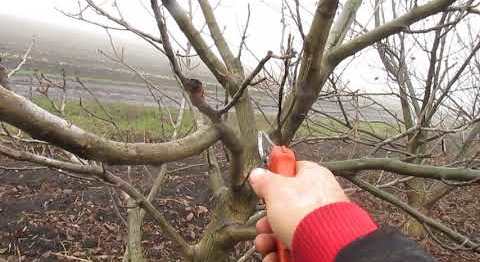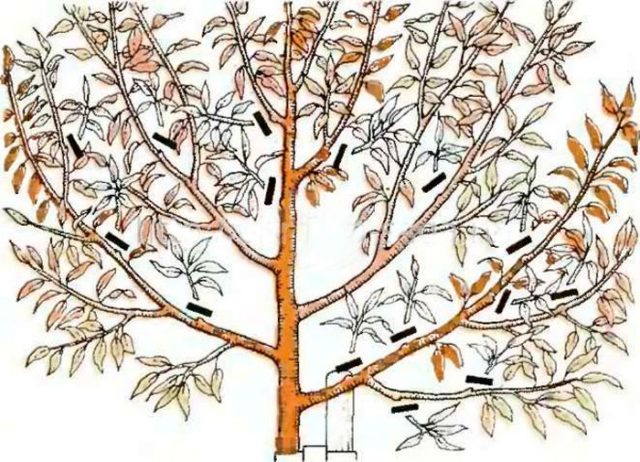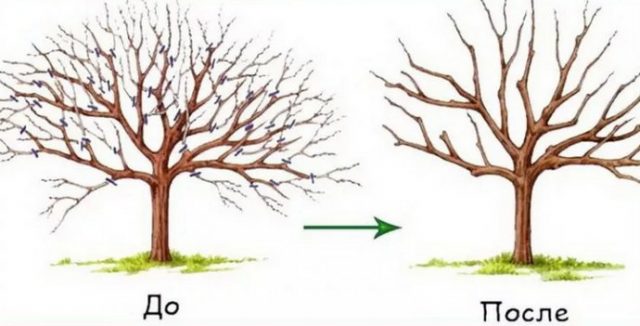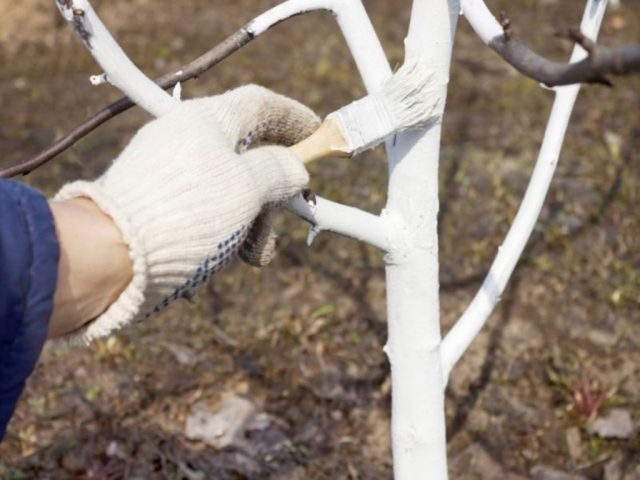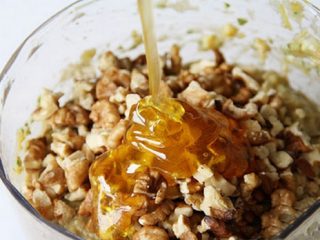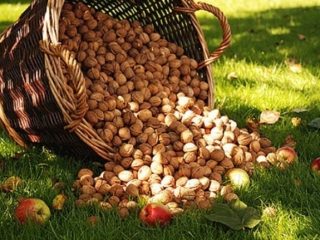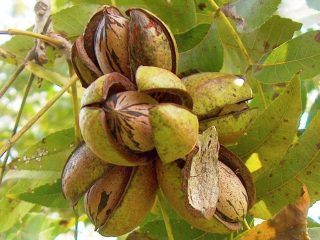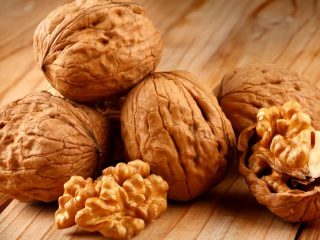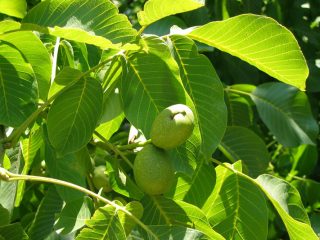Content
Walnuts are grown by gardeners quite often, especially in the southern regions of our country. It is often treated according to the “plant and forget” principle, since the tree is quite unpretentious and is able to grow without any intervention. However, to obtain consistently high yields of nuts, it is necessary to carry out some care measures. These include pruning walnuts in the fall.
Do I need to trim walnuts?
Walnut, like any other tree, grows intensively in the first years of life. In the first 5 years, its skeleton grows, frame branches are laid, and the crown is formed. If no measures are taken, the shape of the tree will be far from ideal, and fruiting is unlikely to become regular and abundant. Therefore, in the first years of life, the crown of the future walnut must be formed by pruning.During this process, unnecessary and improperly growing branches are removed, the base of the future tree and its frame are formed in accordance with the selected type of crown.
In addition, walnut pruning is carried out in spring and autumn to maintain the health of the tree. Dried, broken and damaged branches must be cut out of its crown, since they are all potential sites for diseases and pests. This procedure can be carried out throughout the season.
Walnut is a very light-loving crop, so for normal fruiting its internal space must be well lit. This is also achieved by pruning, removing thickening branches growing inside the crown, as well as top shoots.
When to trim a walnut
The main types of walnut pruning are usually carried out in the spring. However, some work can be carried out in other periods. For example, sanitary pruning of walnuts is performed at least 2 times a year: in the fall, after harvesting, and in early spring, before the beginning of the growing season. In addition, it may be required in emergency cases if the tree has been damaged, for example, by strong winds or suffered from mechanical stress.
Walnut pruning in spring
Spring pruning of walnuts is carried out during a period when the air temperature is steadily above 0 ° C, but the buds are still in a dormant state. This suggests that the growing season has not yet begun, the tree continues to be dormant. There is no active movement of juices inside it, so it will tolerate pruning painlessly.
In addition to sanitary in the spring they do anti-aging pruning mature walnut trees by removing some of the old wood at the top of the tree.This allows the interior of the crown to be well illuminated and stimulate the growth of new side shoots. And also in the spring, the crown of young walnut trees is formed, pruning them in accordance with the chosen pattern.
Pruning walnuts in summer
Summer pruning of walnuts is carried out in the middle or end of July. At this time, the tree produces a lot of young shoots. By removing it at an early stage, you can significantly reduce the amount of work for yourself in the fall, and also save the tree nutrients, directing them not to forcing out improperly growing and unnecessary shoots, but to the formation of fruits. It is also important that the shoots at this time are green and non-lignified. It is easy to stop their growth by simply pinching their tops with your fingers.
Pruning walnuts in autumn
In order not to weaken the plant before wintering, heavy pruning is not practiced at this time of year. In autumn, the scheme for pruning walnuts is quite simple. At this time of year, it is enough to inspect it and remove diseased and dried branches. In addition, the current year's growth is shortened by 1/3, since young branches over 0.6 m long are prone to freezing.
How to trim a walnut correctly
For good fruiting and ease of work, a young walnut tree is shaped, giving it a certain type of crown by pruning. The most common formation methods are the following:
- tiered (improved-tiered);
- leader;
- cup-shaped.
The choice of walnut crown formation scheme is determined by the gardener independently, based on conditions, climate, as well as personal preferences and experience.
To perform pruning you will need the following tools:
- garden knife;
- lopper;
- pruner;
- garden saw;
- stepladder or ladder for working with the upper tier of the crown;
- garden pitch or natural oil paint;
- gloves, goggles and other personal protective equipment.
Before trimming, all cutting edges of the tools must be properly sharpened. The sharper the tool, the cleaner the cut will be. He will heal much faster. To avoid infection, the instrument must be treated with alcohol or any disinfectant solution before carrying out work.
Tiered scheme for pruning walnuts
After planting, the walnut seedling is pruned at a height of 0.6-0.8 m. This is necessary so that the tree restores the root system, which, as a rule, is severely damaged during transplantation. Starting from the second year, crown formation begins. The essence of the tiered method is to form 5-6 fruit tiers on the tree, each of which consists of 3 skeletal branches that have good angles of departure and are spaced 12-15 cm from each other. The distance between the tiers should be in the range of 0.5-0 .6 m.
Leader trimming
The basic principle of the leader scheme for the formation of a walnut crown is the uniform arrangement of 6-8 skeletal branches in a spiral at a height of 0.5 m from each other. A tree formed in this way is evenly illuminated, which has a positive effect on productivity.
Cupped young walnut pruning
Shaping a tree into a bowl allows you to significantly reduce its height and make it easier to work with the crown.In order to form a nut in this way, it is necessary to leave 3-4 skeletal branches at a height of 1-1.2 m, having good angles of departure and spaced 0.25-0.3 m from each other. The central conductor above the upper branch is cut off completely . Thus, the tree does not grow upward, but in width, gradually acquiring second-order branches, which are shortened by 1/3 with each subsequent pruning.
Rejuvenating pruning of walnut tree
Over time, the yield of walnuts (usually in trees older than 10 years) may decrease, and the fruits themselves become smaller and deformed. The situation can be corrected with the help of anti-aging pruning, removing some of the old wood and growing new shoots instead. This procedure is carried out in the spring. First of all, shoots that are too long and lateral shoots are removed, and the interior of the crown is lightened. Light rejuvenation is done once every 3-4 years, more serious pruning – once every 6-8 years.
After particularly harsh winters, it happens that the walnut tree freezes completely. In this case, radical pruning is used, which consists of completely cutting down the trunk. If the walnut root system remains in a viable state, the stump will begin to produce abundant root shoots. In this way, you can grow a new one in the place of an old tree, without resorting to uprooting the old one and planting seedlings.
Sanitary pruning of walnuts in autumn
Sanitary pruning in the fall is very important to keep the tree healthy. Every broken or dried branch is a place where diseases can develop, especially in a humid, warm climate.
It allows you to identify diseases at an early stage, localize disease foci and save trees from possible death.
Affected and dry branches are wintering sites for insects and their larvae. Timely removal of such “hostels” in the fall contributes to the overall health of the tree and prevents the development of the pest population. For maximum safety, all cut wood and fallen leaves after sanitary pruning must be burned.
Care after trimming and shaping walnuts
Pruning in the fall weakens the walnut. Timely feeding with a small amount of potassium and phosphorus fertilizers, which are applied to the tree trunk circle in liquid form, will help him quickly regain his strength. After sanitary pruning in the spring and whitewashing should be done in autumn tree trunks and lower skeletal branches. This is an excellent way to control pests living in the folds of the bark. In addition, frost holes appear much less frequently on whitened trunks.
You can whiten either with a ready-made composition, purchased in a specialized store, or with other solutions prepared independently. For whitewashing, use slaked lime solution, chalk, PVA wood glue, acrylic and water-dispersion paint. The most important thing is that the layer of paint does not interfere with air access to the bark.
Advice from experienced gardeners
Trimming a walnut, especially an adult one, is a long and painstaking procedure.Experienced gardeners recommend using the following recommendations when carrying out work independently.
- A tree formed in a tiered or leader manner can reach significant heights. To avoid problems with working at heights, it is better to form it in the shape of a bowl.
- The points of shoot departure, which form an acute angle with the central conductor, are places of potential fracture of the walnut tree trunk. You need to get rid of them.
- Large branches must be removed in several stages. To avoid scuffing the bark, you must first make a cut from the bottom of the branch.
- All tools must be sharpened. This is not only a guarantee of even cuts and cuts, but also a way not to get tired longer. It is easier and easier to work with a sharp tool, this is important for large volumes of work.
- It is better to remove one large branch than several small ones.
- Too much anti-aging pruning is likely to harm the tree, and its restoration will take a long time. No more than 1/3 of the old wood can be removed at a time.
- After rejuvenating pruning in the spring, the trees need to be fed, including nitrogen-containing fertilizers, to stimulate the growth and development of new shoots. In autumn, fertilizers containing nitrogen cannot be used.
- You cannot start work too early in the spring or too late in the fall. If the plant gets exposed to frost, the cuts will certainly freeze and the branch will die.
It is also worth noting that gardeners do not have a consensus on the use of garden varnish or oil paint for processing cuts and cuts when pruning walnuts.Some believe that healing should occur naturally, others prefer to use honey, potassium permanganate and other agents as a healing agent. Therefore, in this matter the right of choice remains with the gardener.
Conclusion
Pruning walnuts in the fall is only part of the work involved in caring for this beautiful tree, which lives for 100 years or more. This procedure not only promotes good annual fruiting, it maintains the plant in a healthy state for many years. Therefore, you should not neglect it.
